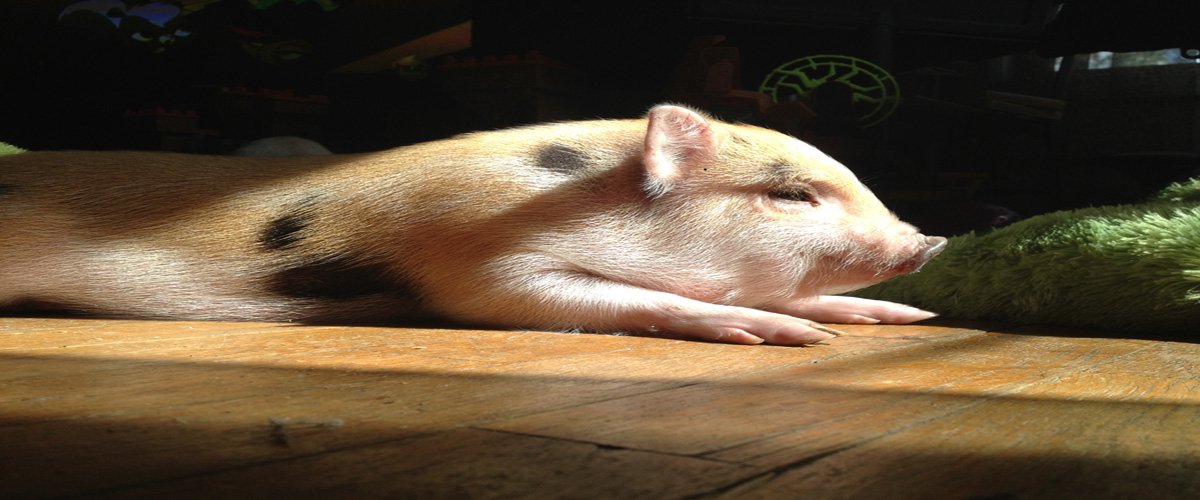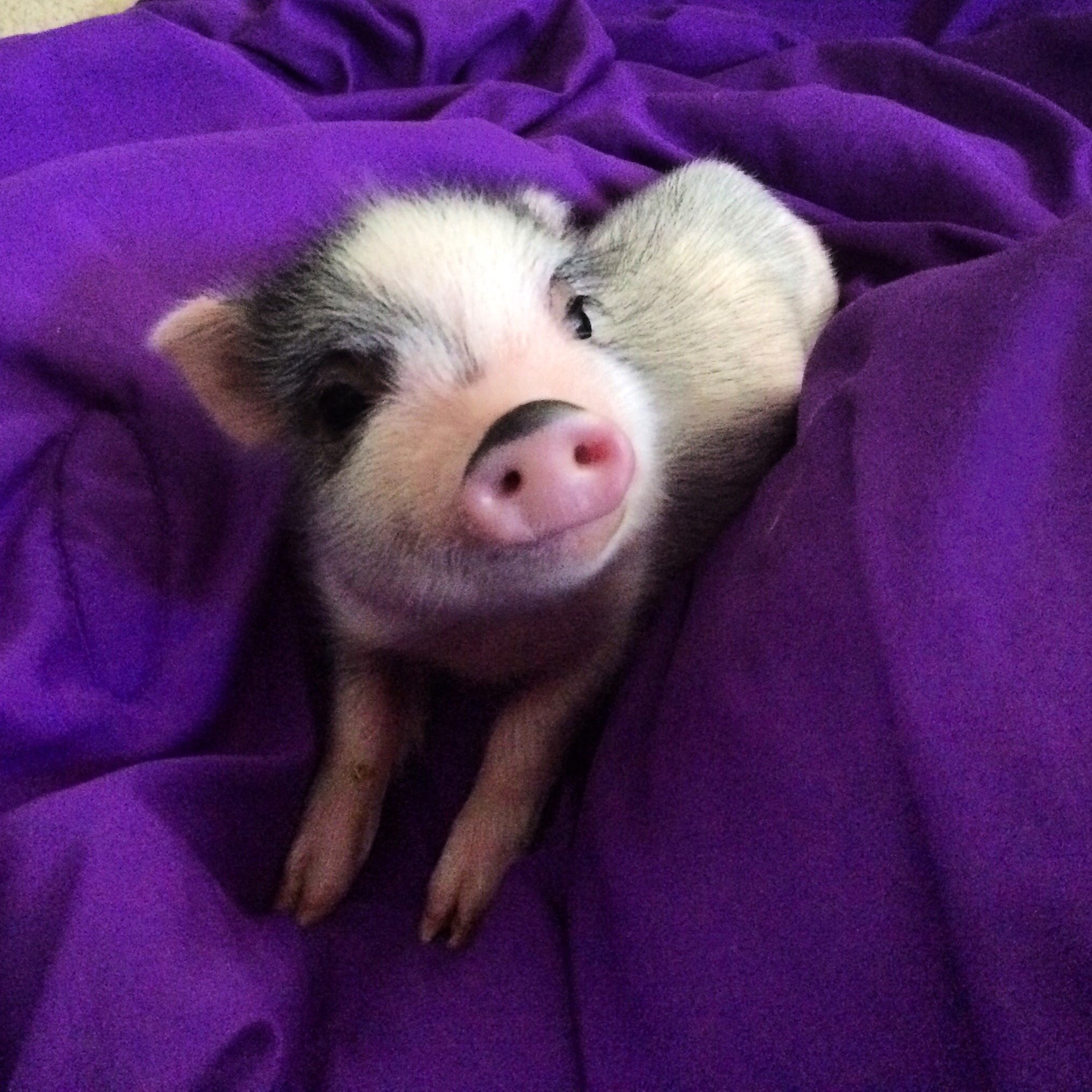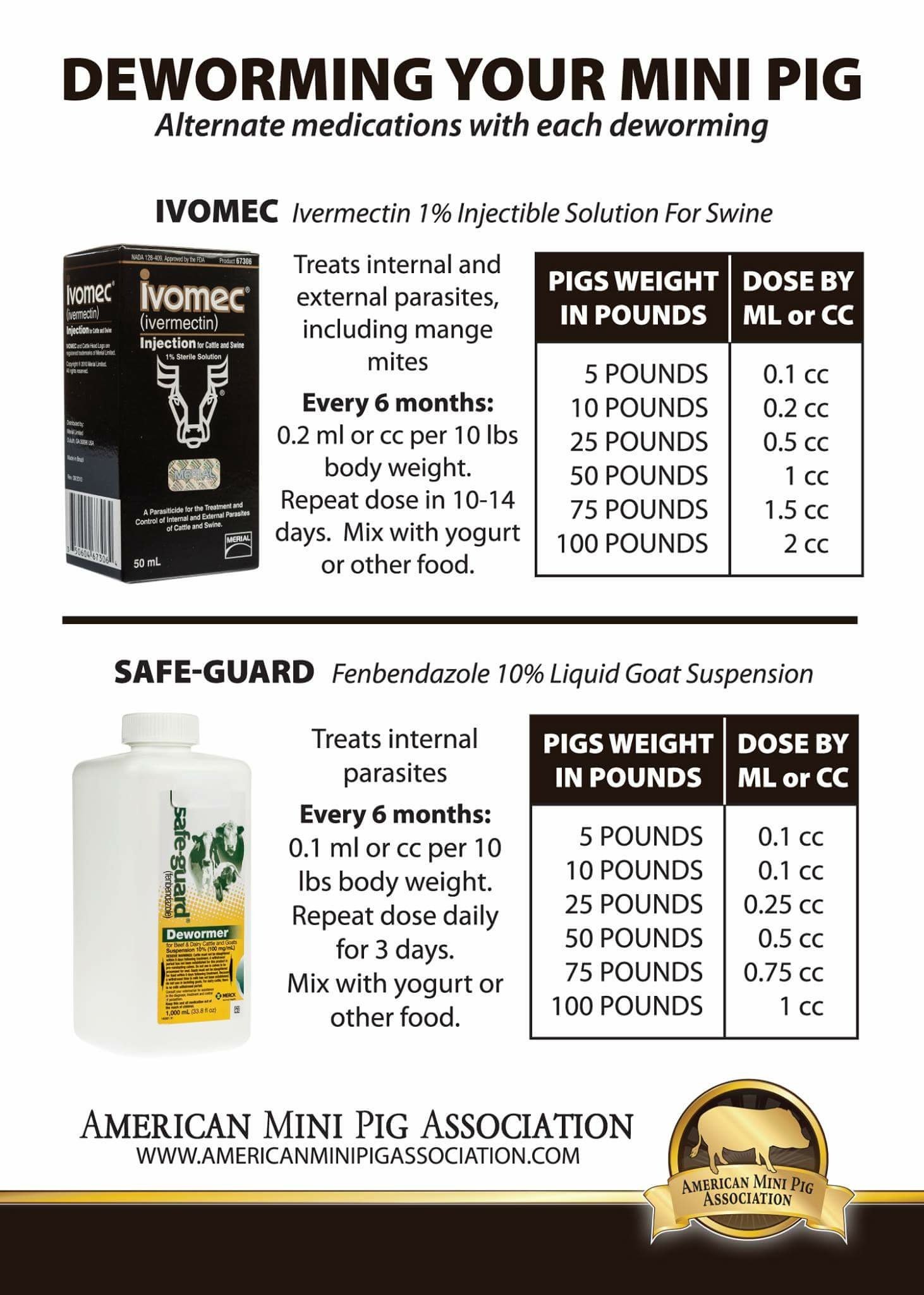Mini Pig General Care
Mini pig general care is an extremely broad topic. We hope to touch on the basics but encourage you to do as much research possible on the American Mini Pig Association website.
First and foremost, you will need a veterinarian that is experienced treating mini pigs. AMPAVETS.COM

Piglets are not like a puppy or kitten. They do not instantly trust you. You have to earn and build a trusting relationship so that the piglet will feel safe and comfortable. Pigs are prey animals in nature so they have an intense flight response. They will want to bolt when there are quick movements, loud sounds, or hands reaching out toward them. We work hard to expose our piglets to family life in our little home. They experience all the noises and movements that can be expected.
We recommend that you begin your relationship by sitting on the floor with your piglet in a small, safe area. A pet playpen or a laundry/bathroom with a baby gate. Sit in your piglet’s area and let the piglet come to you. You can use food!! Food is the ultimate ice breaker with pigs. Cheerios, broken up banana chips, pig pellets are my top choices.
Offer food and let the piglet eat from your open hand, easing him or her in closer and closer SLOWLY. We also recommend that you tell the piglet what you are going to do before you do it. Say the word “pet” before you reach to pet, and “up” before you pick the piglet up. Soon they will learn that your hands mean no harm. Holding your piglet in your lap as much as possible, scratch or giving belly rubs is a good way to connect with your piglet.
We start trick training before the piglets leave us. Use those skills and tricks to bond with your piglet. They will recognize that common language and feel instantly more comfortable and confident. Ask for sit, come, step up, ring the bell, play piano. Any tricks that you have watched your piglet learn in our Facebook Instagram or Youtube videos.
Piglets do not like to be held up off the ground. It’s unsettling and uncomfortable for them. They will wiggle and sometimes scream. You have to ignore this and support the piglet close to your body until he/she settles down. You can see video help for how to pick up and hold your piglet here.
Pigs have a huge vocabulary. Listen closely to the little squeaks and grunts and you will learn that your piglet is communicating with you. They can tell you when they need to go potty, when they want outside, and definitely when they are wanting a treat, snack or simply some attention.
People are shocked to learn that piglets/pigs can jump! They can easily hop up on the couch and some even jump into the family bed. Piglets love to cuddle and sleep in bed with their family. You will also find they will be very content in a cozy bed in their own little space.
These are incredibly intelligent animals. Once you have your piglet eating treats like cheerios, quartered grapes, or apple bits you can teach them numerous tricks in just minutes! It’s really amazing!! Make sure that you challenge your piglet into learning new things and earning those treats.
Socializing and Earning Trust with Your Mini Pig
Bathing Your Mini Pig
Pigs DO NOT love having baths, so for the first several baths you may want to grab the ear plugs.
Pigs can be bathed in gentle human and baby soaps/shampoos. They have naturally very dry skin. We use baby shampoo or Head and Shoulders.
Put a towel down in the tub so the piglet doesn’t slip around. Some piglets enjoy the water and extra attention and some just want out. Don’t forget that piglets can jump. Baths trigger that flight response and squealing. Baths can also cause nervous poops. You can expect to experience at least one if not all three. Treats in the bathtub may help. Some owners use peanut butter on the side of the tub. We just fill the tub up a couple of inches and use a hand held shower head or a cup to wet and rinse the piglets and quickly start the scrubs and scratches. Some piglets enjoy the scratches enough to get distracted and almost content. Some piglets will just not accept bathing. Luckily, mini pigs do not need frequent baths. Baby wipes come in handy when you need to “spot clean” your pig.
Deworming Your Mini Pig
Like your dogs and cats, mini pigs need deworming for parasite treatment/prevention. This can be managed by your veterinarian, or you can deworm your mini pigs at home. There are two medications required. They may both be given by mouth, mixed in something tasty. You may give the medicines at the same time or you can alternate. Every Charming Mini Pig new owner will receive the American Mini Pig Association deworming dosage chart and record of the date, medicines, and dosage of all treatments given prior to your piglet leaving us.
Deworming mini pigs with Ivermectin using a medication syringe and cheerios.
Hoof Trimming
There are a few tools you can use to trim and maintain the length and shape of your pig’s hooves. With a piglet a larger nail clipper and high grit emery board will all work to help desensitize your pig to the hoof trimming process.
Get your mini pig comfortable on his/her side with a belly rub and then check the hooves one by one. It is important to start them getting used to having their hooves touched and trimmed when young and often. Remove any impacted dirt from inside the front of the grown hoof. Once you can clearly see hard and soft tissue begin cutting away excess. Cut parallel to the heel and toe. Gently, but firmly trim down to level the growth with the heel or soft pad of the hoof. Use a file, dremel, or rasp to smooth rough edges. Pigs have two dew claws that will also need trimming while being aware of the soft tissue inside. Do not cut too short.
As your mini pig ages, the hooves will become thicker and tougher. Sturdier tools will be needed. Goat hoof trimmers, horse hoof nippers, dremel, metal file or rasp are all great tools for trimmings. There are professional hoof trimmers that travel across the U.S. that will come directly to you for hoof maintenance. You can find a list of traveling trimmers here.
How to teach your mini pigs to be accepting of hoof trimming. Lots of handling all over, lots of belly rubs, filing, sanding on those hooves from a young age helps desensitize them for easier trims when they are older.
Dental Health Care
Dental care is required for mini pigs. Pigs have unique teeth. They tend to be poorly aligned and crocked. Some pigs have discolored teeth. They are a strange size and shape for their mouths. I love how unique their teeth are. Some owners are not as impressed.
You can use a few options to help keep your mini pig’s teeth healthy for years to come.
Pigs, like humans have baby teeth that will fall out and be replaced by permanent teeth. The teeth will need to be healthy to last a lifetime. Brushing is great and should be started young to establish it as a pleasant part of your pig’s routine. Floride free toothpaste, a small amount of baking soda, coconut oil, or a dry toothbrush can be used for cleaning.
Dental chews like Whimzees, which can be great for a teething pig, bored pig, or to keep your pig busy while you make phone calls, exercise, etc. I can get a good yoga session in before my pig finishes their Whimzee.
Crunchy vegetables will also help with dental cleaning and plaque removal. Carrots, celery, broccoli, sweet potatoes cut into small cubes are great choices. They will help remove plaque plus they are full of vitamins and minerals.
Dental powder can be added to your mini pig’s pellets. PetLabCo is a great choice. For treats that help with fresh breath you can find a fun, tasty recipe here.
Mini Pig Tusks
Mini pigs grow tusks in the four corners of the mouth. The same area where we have our 4-pointed canine teeth. Female mini pig’s tusks will grow slowly and rarely reach outside of the lips. They may eventually need the tips dulled. Male pigs grow tusks that will grow outside of the lips. These tusks will have to be trimmed, dulled, shortened as their mature. Your veterinarian may take care of tusk maintenance. Professional traveling hoof trimmers will also help with tusk maintenance.
Pigs that are not neutered will have tusks that grow more rapidly and larger.
Teaching a mini pig to get her teeth brushed.
You can find more information on Dental Care and Tusk Trimming here.
Have questions?
It’s good to have questions!! We are always happy to talk about mini pigs. We will get right back to you.

















